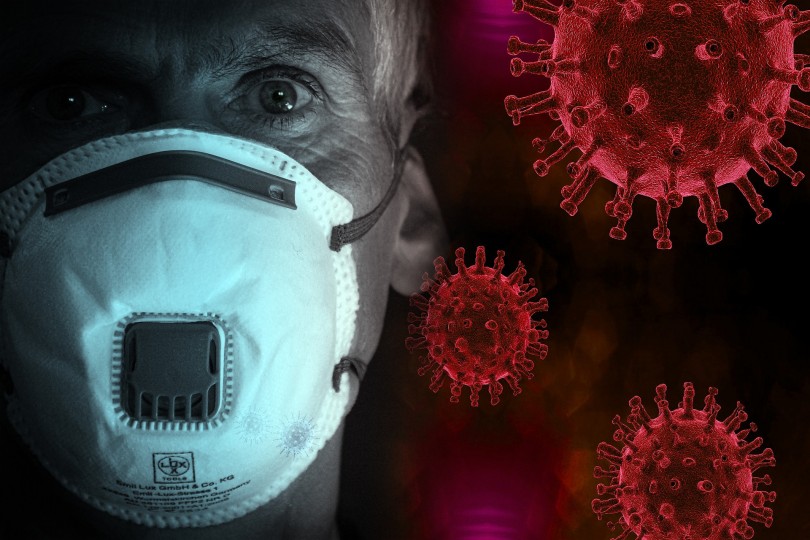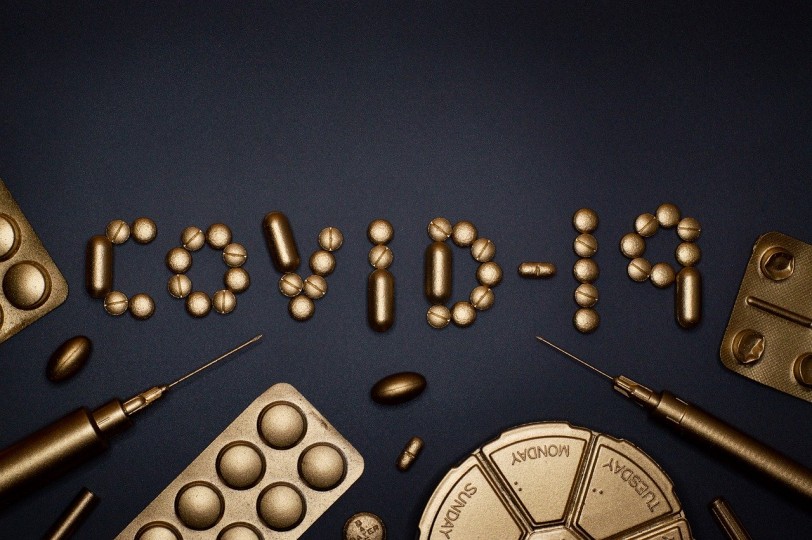Treating COVID-19

COVID-19 represents a significant threat to society worldwide because we have little if any, herd immunity to limit the spread of infection and we lack the drugs to limit the destructive inflammation that results in certain patients when the body responds to the virus.
Herd immunity is defined as that immunity which builds up in population, either due to natural exposure to (and, of course, surviving) an infectious agent or to being vaccinated against it as part of a disease prevention program. With regard to this pandemic, we have not been previously exposed to the SARS-CoV-2 virus and a vaccine against it does not exist. In the longer term, it is essential that a vaccine is developed as soon as possible as this is the gold standard for infectious disease protection but it is likely to take a year or more of hard and expensive work before one becomes available.
Vaccines
At this stage, it is unclear which type of vaccine will be the most effective in stimulating a person’s immune response such that cytotoxic cells and/or protective antibodies are produced in sufficient quantities to neutralize the virus. However, researchers around the world will be using a variety of different approaches to ensure the right one emerges. For example, some groups may examine whether the vaccine should be constructed using the whole virus particle (dead, as with flu or living but weakened, as with polio) and some whether using just a small part of the virus will suffice (as with Hepatitis B virus). With regard to the latter, a number of researchers are focusing on the spike protein on the surface of the SARS-CoV-2 that the virus uses to gain entry to a respiratory cell. Any antibodies that can be produced to this component will likely block viral entry and thus stop the infection.
Passive antibody transfer therapy
The putative vaccines described above rely on the active involvement of a person’s own immune system to generate a protective antibody response, a process known as active immunity. It will take about 2 weeks to occur, and will be of little value to someone with COVID-19. However, one vaccine-related treatment option that may have some immediate benefit is under trial at the moment and takes advantage of the fact that COVID-19 patients who overcome the disease, do so by stimulating the production of their own protective antibodies. A large volume of convalescent serum will be required before antibodies can be harvested, concentrated and purified to the point where they can be injected into an ill patient to stop the virus in its tracks. This process is termed passive antibody transfer therapy and the concept is not new since it was first used in the late 19th Century for combating infectious diseases such as diphtheria. Here, rather than using convalescing humans as a source of antibodies, serum from animals such as the horse deliberately immunised with, for example, diphtheria toxin was used. Often, it was the only available treatment for certain diseases but, unfortunately, the animal approach was not without risk to the patient and it fell by the wayside as antibiotics were developed during the 1940’s. However, these earlier limitations have now been overcome, and a number of clinical trials are currently underway for diseases such as rabies, HIV and flu, and the approach is now extended to include COVID-19 antibodies. The distinct advantage of this approach is that unlimited quantities of antibody of consistent quality can be produced with a long storage life.
Drugs to Treat COVID-19

At present, drugs to cure the disease are non-existent. As you will be aware, most patients with COVID-19 suffer mild disease, which resolves over a period of time (due to the generation of antibodies as well as other immunological mechanisms) and treatment is likely to consist of paracetamol for pain and maintaining fluid intake. However, people over 65 with a pre-existing condition such as heart disease, chronic lung disease, hypertension or diabetes are susceptible to very severe disease, manifesting as pneumonia, which may or may not then lead on to acute respiratory distress syndrome with a high fatality rate. It is to these categories of patient that drug development is being directed as the only treatment currently available is supportive. To resolve the lack of treatment options, particular attention is focused on trying to control and/or reduce the inflammatory response an infected individual mounts when the virus invades the lower respiratory tract or, alternatively, stop the virus gaining entry to a respiratory cell or stop it from multiplying if it gets inside.
Anti-Inflammatory Drugs
Deleterious inflammatory responses occur with diseases other than COVID-19, and a number of drugs have been developed to suppress them. An inflammatory response to an invading microbial agent is both a usual and essential step in resolving any infectious disease and involves many components some of which are cytokines, a diverse group of small proteins. Usually, cytokines are released from cells in a coordinated and controlled way. However, in certain circumstances, such as that now being seen with some COVID-19 patients, an exaggerated and uncoordinated release of cytokines (a cytokine storm) occurs, which is both excessive and uncontrolled, which results in significant tissue damage to tissue. Thus, medical researchers are investigating whether some of the anti-cytokine drugs shown to be effective in controlling inflammation in diseases such as, for example, rheumatoid arthritis, will work with severe COVID-19 disease. However, before they can be used to treat COVID-19, we must first determine which cytokine or multiple cytokines are important and then test each cytokine-specific drug to determine their efficacy as well as their potential deleterious side effects.
Anti-Viral Drugs
With regard to anti-viral drugs, clinical trials of some of those routinely used to treat HIV are under investigation but thus far, these do not seem to be effective treatment options. However, there is some evidence that a drug developed in Japan (favipiravir) for treating flu may be effective in patients with mild to moderate COVID-19. Drugs used to treat malaria such as chloroquine phosphate and its less toxic derivative, hydroxychloroquine have been shown to stop the replication of the related SARS-CoV-1 virus, as well as some other viruses. This inhibitory activity was originally demonstrated in the test tube but when the drug was tested in flu and dengue patients, the results were disappointing. However, given their in vitro activity, as well as our lack of understanding about how they actually stop viral replication, further investigation in the context of COVID-19 is suitably justified.
Conclusions
Many laboratories around the world are either developing new drugs or looking at re-purposing other drugs such as the antimalarials mentioned above. At the last count, more than 200 clinical trials are underway to establish their effectiveness. With regard to vaccines, it is likely to take some considerable time before a product becomes available and, even if an effective vaccine is produced, it will take even more time to determine how long the vaccine-induced protection will last. However, we can take some comfort in knowing that many pharmaceutical companies are involved in this search and that regulatory authorities will be fast-tracking the roll-out of any effective vaccine without compromising safety and efficacy. Although implementing social distancing and enforcing barriers to stop the spread of, and/or contain the infection within our community is all we presently have, 2021 should herald the arrival of potent vaccines and efficacious drugs to combat COVID-19.
Images by Miguel Á. Padriñán and enriquelopezgarre.